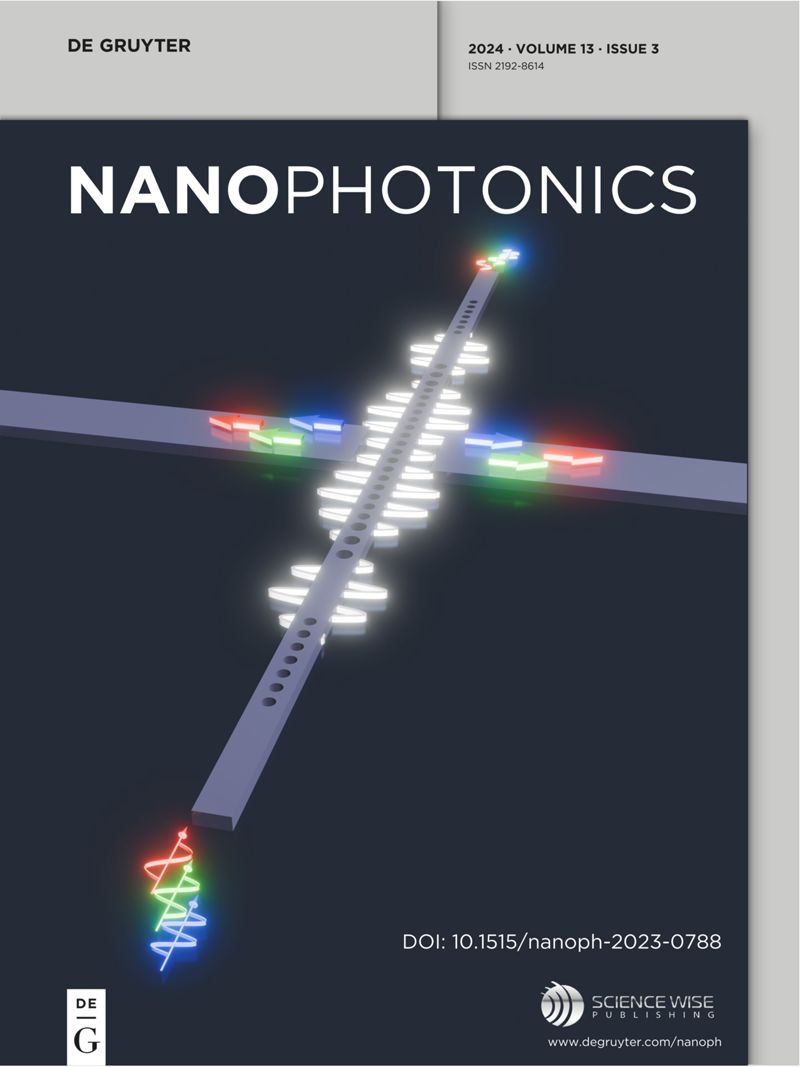无透镜和有限探测器成像的主动超表面设计
IF 6.5
2区 物理与天体物理
Q1 MATERIALS SCIENCE, MULTIDISCIPLINARY
引用次数: 0
摘要
超表面的出现实现了轻量化、紧凑的成像和自由度,而以前需要复杂的光学设置才能实现,如偏振、波矢量和光谱。迄今为止,大多数支持超表面的成像系统迄今为止都是“被动的”,因此受到光与传感器阵列耦合所设定的基本信息和厚度限制。我们讨论了有源超表面在低形状因子和低像素计数成像系统中的使用,并介绍了一个原型无透镜成像系统概念,该系统采用有源超表面作为高频,连续可调的幅度和相位调制孔径,耦合到一个离散的单像素探测器。我们分析了这种平台的可扩展性,并通过计算证明了可扩展的“周长控制”寻址架构-其中M × N矩形散射元件阵列仅由M + N电压寻址-足以用于图像收集,即使散射体表现出有限的272◦$\左({272}^{{\circ}}\右)$相位控制和不期望的幅度变化。我们还讨论了在信息收集、图像像差和信噪比方面的基本限制,强调了主动超表面成像的关键优势、限制和权衡。我们将讨论推广到其他支持活动超表面的成像配置和应用。最后,我们考虑了有前途的活性超表面材料平台,并展望了实现高效成像的新方向。本文章由计算机程序翻译,如有差异,请以英文原文为准。
Active metasurface designs for lensless and detector-limited imaging
The emergence of metasurfaces has enabled lightweight, compact imaging with degrees of freedom which previously required complex optical setups to achieve, such as polarization, wave vector, and spectrum. To date, most metasurface-enabled imaging systems have thus far been ‘passive’, and therefore subject to fundamental information and thickness limits set by the coupling of light to their sensor arrays. We discuss the use of active metasurfaces in low form-factor and low pixel-count imaging systems and introduce a prototypical lensless imaging system concept which employs an active metasurface as a high-frequency, continuously tunable amplitude and phase modulation aperture, coupled to a discrete single-pixel detector. We analyze the scalability of such a platform and computationally demonstrate that a scalable ‘perimeter-control’ addressing architecture – in which a M × N rectangular array of scattering elements is addressed by only M + N voltages – is sufficient for image collection, even when scatterers exhibit limited 272 ◦ $\left({272}^{{\circ}}\right)$ phase control, and undesired amplitude variations. We also address fundamental limits in information collection, image aberrations, and signal-to-noise ratio, highlighting key advantages, limitations, and trade-offs for active metasurface imaging. We generalize our discussion to other active metasurface-enabled imaging configurations and applications. Finally, we consider promising active metasurface material platforms with an outlook towards new directions to enable high-efficiency imaging.
求助全文
通过发布文献求助,成功后即可免费获取论文全文。
去求助
来源期刊

Nanophotonics
NANOSCIENCE & NANOTECHNOLOGY-MATERIALS SCIENCE, MULTIDISCIPLINARY
CiteScore
13.50
自引率
6.70%
发文量
358
审稿时长
7 weeks
期刊介绍:
Nanophotonics, published in collaboration with Sciencewise, is a prestigious journal that showcases recent international research results, notable advancements in the field, and innovative applications. It is regarded as one of the leading publications in the realm of nanophotonics and encompasses a range of article types including research articles, selectively invited reviews, letters, and perspectives.
The journal specifically delves into the study of photon interaction with nano-structures, such as carbon nano-tubes, nano metal particles, nano crystals, semiconductor nano dots, photonic crystals, tissue, and DNA. It offers comprehensive coverage of the most up-to-date discoveries, making it an essential resource for physicists, engineers, and material scientists.
 求助内容:
求助内容: 应助结果提醒方式:
应助结果提醒方式:


